By: Elizabeth Clark
Summer is upon us, which means summer vacations are being planned. There are many options for those looking to get away, and one very popular choice is to go on a cruise. Everything about a cruise just oozes relaxation: the exotic ports of call, the luxurious spa/fitness packages, and the five star cuisines prepared and served to those aboard.
As a food scientist, the latter subject intrigued me. How do cruise lines prepare these gourmet menus on board? How is food safety maintained on a huge cruise ship? And exactly where does all the extra/waste food go? Fortunately, I was able to get some answers to these questions when I spoke with one cruise line chef simply known as Chef Sinclair.
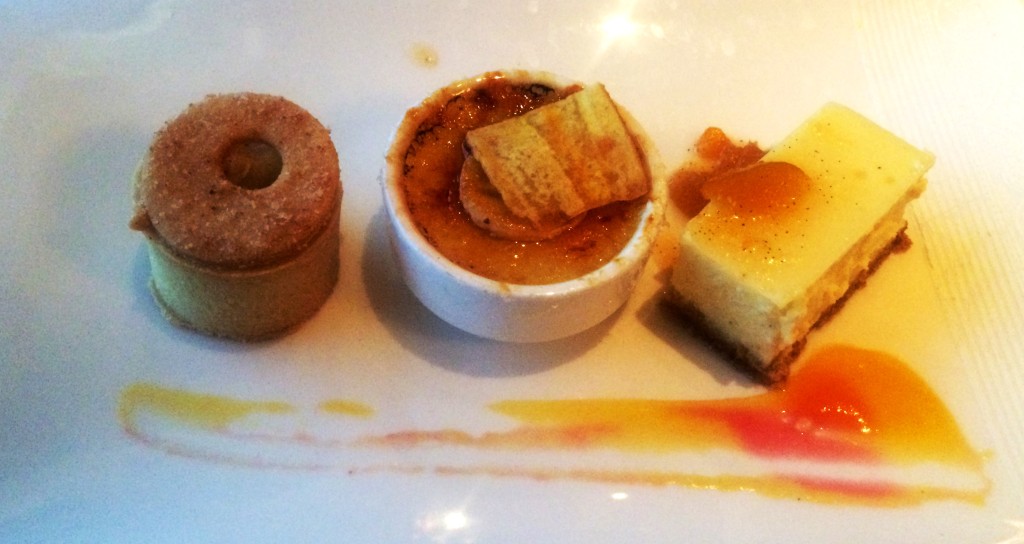
The first question I had for Chef Sinclair was how do they get all the food onboard to feed the guests and staff? He told me that the amount of food they purchase is actually dictated by the guests themselves. When the guests order their breakfast, lunch, and dinner each day, their order gets entered into a computer system. This system keeps track of which menu items are ordered the most. The cruise line then takes this data and uses it to approximate just how much food they need to purchase for future cruises.
Now that the cruise line knows how much food to purchase, how do they get it all aboard the ship? When cruise ships pulls into port at the end of each cruise, they generally have about 8 hours to clean, reload, and restock before they head back to sea. During that time, ALL the food for the next trip must be loaded onboard. Before being put on the ship, food is inspected and must be found in compliance with its respective governing agency (either the Food and Drug Administration or the United States Department of Agriculture). Once onboard, food products are not to leave the vessel especially while docked in foreign ports. This would violate international trade laws governing food and agricultural products. Likewise, no agricultural food products procured abroad may be brought onto U.S. soil.
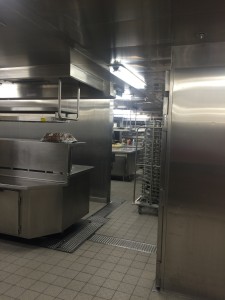 A major topic of concern for any cruise ship is that of food safety. As recently as April 2015 there have been reported outbreaks of foodborne illness, namely Norovirus, aboard cruise vessels. Norovirus causes stomach or intestinal inflammation, which leads to stomach pain, nausea, diarrhea, and vomiting. It is a highly contagious virus contracted from an infected person, contaminated food or water, or by touching contaminated surfaces. Each year, Norovirus is the most common cause of foodborne-disease outbreak in the United States causing 19-21 million illnesses, 56,000-71,000 hospitalizations and 570-800 deaths. To prevent foodborne-disease outbreaks, all cruise lines departing from a U.S. port are required to comply with the Center for Disease Controls (CDC) Vessel Sanitation Program (VSP). Chef Sinclair informed me that the VSP regularly performs sanitation inspections, monitors/investigates disease outbreaks, and provides education/training to cruise ship personnel on public health practices. Chef Sinclair divulged to me that guest health was a high priority at his cruise line; “I constantly encounter crew performing sanitation protocol. My cruise line even hands every guest a hand-sanitizing wipe so that they may cleanse their hands before entering any restaurants onboard.”
A major topic of concern for any cruise ship is that of food safety. As recently as April 2015 there have been reported outbreaks of foodborne illness, namely Norovirus, aboard cruise vessels. Norovirus causes stomach or intestinal inflammation, which leads to stomach pain, nausea, diarrhea, and vomiting. It is a highly contagious virus contracted from an infected person, contaminated food or water, or by touching contaminated surfaces. Each year, Norovirus is the most common cause of foodborne-disease outbreak in the United States causing 19-21 million illnesses, 56,000-71,000 hospitalizations and 570-800 deaths. To prevent foodborne-disease outbreaks, all cruise lines departing from a U.S. port are required to comply with the Center for Disease Controls (CDC) Vessel Sanitation Program (VSP). Chef Sinclair informed me that the VSP regularly performs sanitation inspections, monitors/investigates disease outbreaks, and provides education/training to cruise ship personnel on public health practices. Chef Sinclair divulged to me that guest health was a high priority at his cruise line; “I constantly encounter crew performing sanitation protocol. My cruise line even hands every guest a hand-sanitizing wipe so that they may cleanse their hands before entering any restaurants onboard.”
Chef Sinclair went on to elaborate on how his cruise line takes even further approaches to food safety. He mentioned that the crew has established HACCP (Hazard Analysis and Critical Control Points) plans to prevent physical, chemical, and biological hazards adulterating the food they prepare. Cruise line crew also adhere to a strict food temperature monitoring system. All foods prepared aboard the ships have set “ideal” temperatures that they must be stored at, cooked to, and maintained at in order to be deemed safe for the guest’s consumption. Additionally the crew closely monitors buffet food temperatures. Anything that falls short of food safety standards is not served to guests or crew.
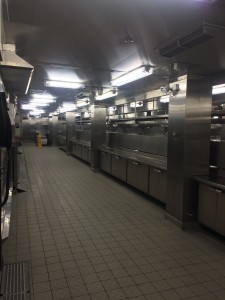
Curious as to where all the food goes that doesn’t meet safety or quality standards? I sure was! Chef Sinclair told me that it, along with regular food waste, gets turned into “fish food”. Basically all approved foods are liquefied and dispersed into the ocean as the cruise ship sails along. The liquefied food product serves as a rich source of nutrients for a variety of marine life.
One last subject I prompted Chef Sinclair to enlighten me on was how the crew went about preparing the food for guests. Chef Sinclair informed me that the menus are set by each cruise line’s Executive Chefs. These chefs work to design menu items giving special consideration to taste and appearance. In order to maintain consistency and ensure guests receive the highest quality meal, chefs on board the cruise vessels are trained to prepare the meals to set specifications. Recipes are followed precisely, and pictures of how each dish should look are posted above their respective preparation station. This guarantees every dish gets plated the same way every time it is prepared.
So next time you go on a cruise, you can truly relax knowing that, whether on land or at sea, food science is there to ensure safe and delicious food is available for everyone to enjoy.
References:
Center for Disease Control and Prevention (CDC) Norovirus: http://www.cdc.gov/norovirus/about/overview.html
Center For Disease Control and Prevention (CDC) Outbreak Updates for International Cruise Ships: http://www.cdc.gov/nceh/vsp/surv/gilist.htm
Center for Disease Control and Prevention (CDC) Vessel Sanitation Program: http://www.cdc.gov/nceh/vsp/desc/aboutvsp.htm
United States Department of Agriculture Foreign Agricultural Services (USDA FAS): http://www.fas.usda.gov/topics/regulations-and-requirements
Cover image source: ww.2luxury2.com
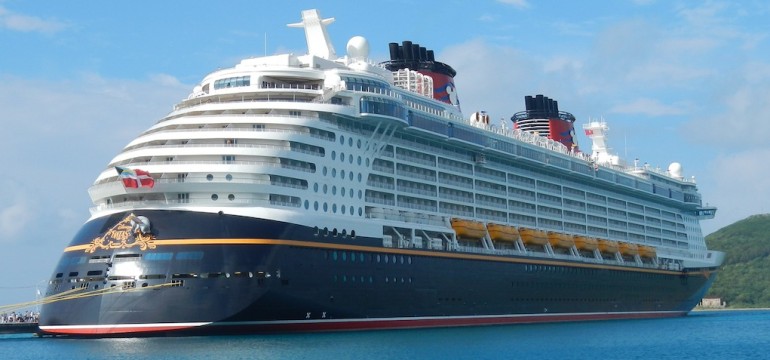

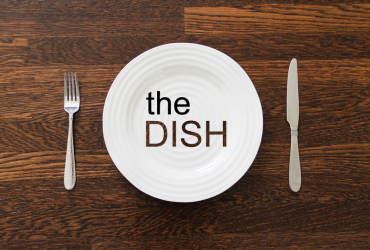



Every time I think about cruise food I think of an example from my Food Microbiology class that pointed out how all the controls are great, but with potentially hundreds of hands using the same utensils to serve themselves at the buffet there is bound to be some cross-contamination between guests. Maybe cruise lines should just let their trained staff handle the food and skip on the buffet lines…
Sounds good, but can you imagine the resulting bottlenecks in service…